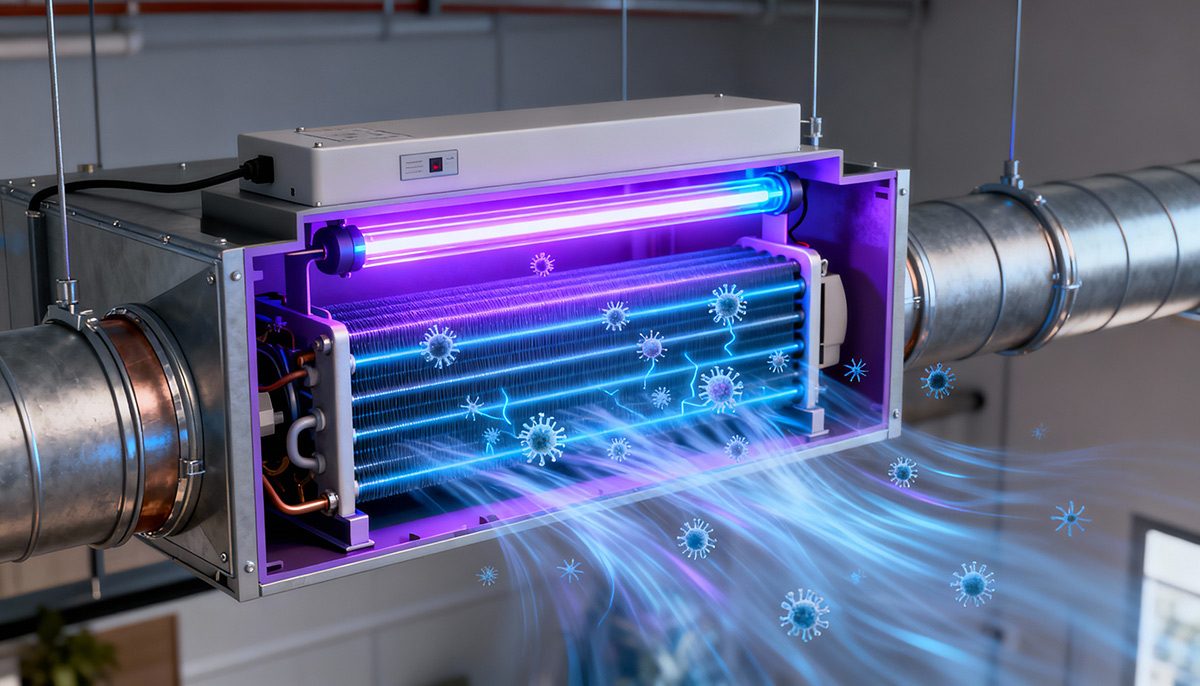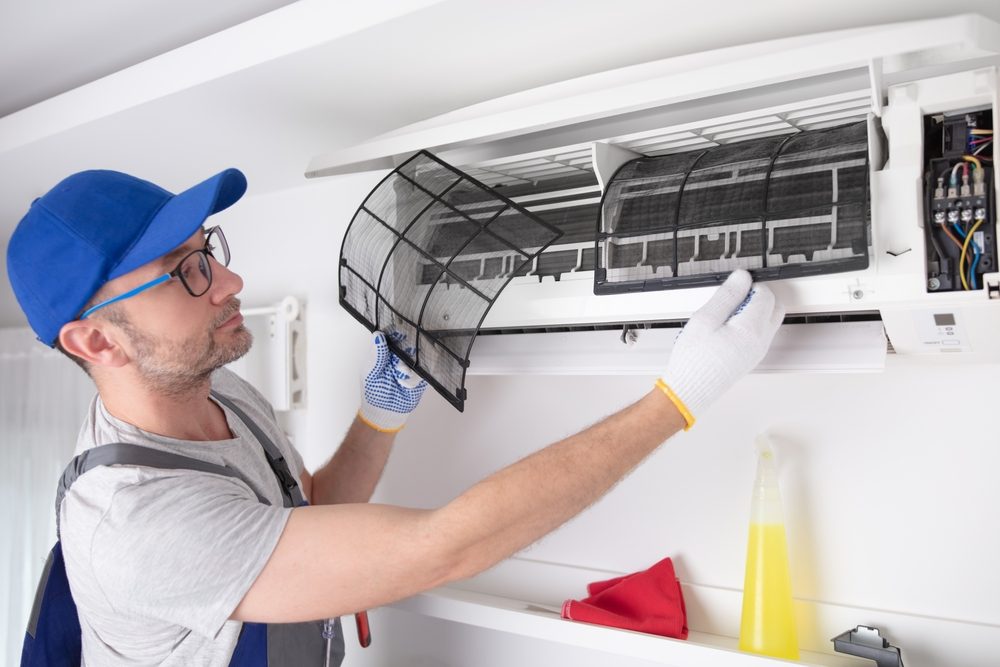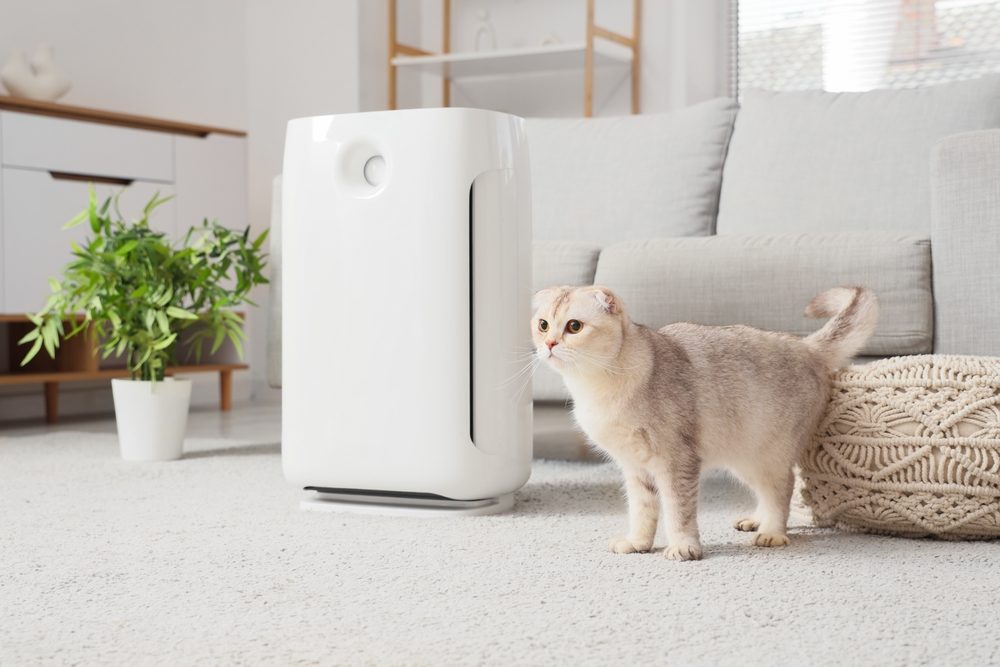
If the temperature of your surroundings is comfortable right now – whether in an office, a mall, a hospital, or any other indoor setting – it is likely due to heating, ventilation, and air conditioning systems (known as HVAC). Millions of people rely on these climate controllers on a daily basis to remain comfortable indoors.
These systems can regulate temperature, humidity, and air quality – from keeping interiors warm during cold weather to keeping us cool when the heat rises outside. HVAC systems are central to our comfort and wellbeing and can help circulate fresh air and remove harmful pollutants.
In the world of HVAC technologies, VRV systems marked a major breakthrough. In this article, we will summarize everything you need to know about these ground-breaking systems, but before we get to that, let’s address an area that often causes confusion. It’s around the naming conventions used for this technology. Confusingly, VRV (Variable Refrigerant Volume) and VRF (Variable Refrigerant Flow) are exactly the same thing.
So, why the different names? The answer lies 42 years ago when Daikin unveiled its trademarked VRV air conditioning system, becoming a global pioneer of variable refrigerant volume control. However, since Daikin trademarked VRV, Industry & competitors had to name such products – hence the commonly used abbreviation VRF.
Now that’s out of the way, let’s look at what you can expect in this article. We’ll be discussing the following:
- What is a VRF system?
- How does a VRF system work?
- Benefits of using VRF systems
- Common applications of VRF Systems
So, let’s switch on the air-con and get started.
What is a VRF system?
A VRF system regulates refrigerant flow to match the heating and cooling demands of different zones, allowing for individualized temperature control and energy efficiency. In short, it enables end users to independently manage multiple air conditioning zones simultaneously. VRFs first came into use in 1982 when Daikin invented the variable refrigerant volume control technology.
How does a VRF system work?
VRF technology works by adjusting the refrigerant volume within a system to precisely meet the requirements of a building. It utilizes the minimum energy necessary to maintain the temperatures that have been set, switching off when no occupants are detected in a room. This versatility helps reduce energy costs.
With the capability of connecting large numbers of air conditioning units to one single outdoor unit, VRF operates similarly to a multi-split system. Each indoor unit determines its required capacity based on the current indoor temperature and the desired temperature set by the remote control. The total demand from all indoor units then dictates how the outdoor unit adjusts the refrigerant volume and temperature, ensuring that only the necessary cooling or heating is supplied.
These are some of the highlights of the VRF system:
- Works as a large, ductless HVAC system operating at high capacity
- Enables several indoor units to operate on a single system (unlike split AC units)
- Inverter compressors drive efficiency due to modulation of compressor speed based on individual space requirements
- VRF systems are highly customizable and work well in commercial settings and facility management
Benefits of using VRF systems
As has already become clear, there are a number of benefits to using VRF technology compared to traditional HVAC systems. Let’s look at these now.
- Efficiency: VRF systems offer higher efficiency than traditional HVAC systems due to their ability to modulate refrigerant flow and compressor speed based on demand, resulting in reduced energy consumption.
- Customization: VRF systems allow individualized temperature control in different zones and the ability to heat and cool simultaneously. Traditional HVAC systems generally offer less flexibility in zoning and temperature control with a large variety of indoor units (wall, Concealed, Cassette, Floor…)
- Installation: VRF systems often require less ductwork and space than traditional HVAC systems, making them easier to install.
- Cost: While initial costs for VRF systems may be relatively high, their long-term energy savings and reduced maintenance needs often offset these costs over time.
- Noise: VRF systems tend to operate more quietly than traditional HVAC systems, offering a more comfortable indoor environment.
- Maintenance: VRF systems may require specialized servicing, potentially increasing long-term maintenance costs. However, their advanced technology can lead to fewer breakdowns and repairs than traditional HVAC systems.
Common applications of VRF Systems?
The various application areas for VRF systems can differ from what we might call traditional HVAC systems. VRF systems really come into their own when precise zoning and individualized temperature control are required – whether that’s in large commercial buildings, multi-family residential complexes, or educational and healthcare settings. Traditional HVAC systems are also used in a number of settings – residential, commercial, and industrial – but provide heating and cooling through centralized ductwork. Unlike VRF, traditional HVAC systems do not support zoning.
So VRF systems emerged as a versatile alternative to traditional HVAC solutions, finding applications in a wide range of settings, including commercial spaces—office buildings, hotels, retail establishments, etc.—all of which benefit from the flexibility and efficiency offered by VRF systems. The popularity of VRFs makes sense when you consider that these settings often need zoned climate control to accommodate varying occupancy levels and usage patterns. VRF systems really excel in such environments by allowing individualized temperature control in different zones.
Outside of commercial applications, multi-family residential buildings have increasingly adopted VRF systems because they provide independent climate control for each unit, enhancing tenant satisfaction and energy efficiency, including villas & townhouses. In addition, educational institutions such as schools and universities, as well as healthcare facilities like hospitals and clinics, benefit from the zoning capabilities of VRF systems. Finally, you will also find VRF systems in data centers, where keeping servers cool is critical for sustained performance.
Conclusion
As the top indoor-comfort solutions Japanese company globally, Daikin understands the importance of the air we breathe. That’s why we’re dedicated to changing how people approach making their homes, businesses and organizations more comfortable. With over 100 years of experience, Daikin has sold millions of systems in 170 countries.
With a strong focus on environmental regulations, lower emissions, health & safety, and energy efficiency, we take a holistic approach to sustainable cooling solutions. Innovative, pioneering technology paired with exceptional service makes us a leading HVAC-R manufacturer. If you would like to find out more about Daikin’s products, contact us today.



